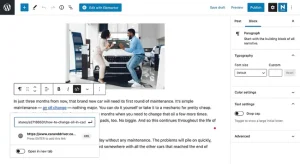PyTorch has emerged as one of the most popular deep learning frameworks, renowned for its flexibility, ease of use, and dynamic computational graph. In this comprehensive guide, we’ll explore PyTorch from the ground up, covering everything from installation and basic concepts to advanced topics and practical applications. Whether you’re a beginner eager to dive into the world of deep learning or an experienced practitioner looking to leverage PyTorch’s advanced features, this guide will equip you with the knowledge and skills needed to succeed in your deep learning endeavors.
-
Getting Started with PyTorch:
-
- Installation: Step-by-step instructions for installing PyTorch on various platforms, including Windows, macOS, and Linux.
-
- Basic Concepts: Introduction to PyTorch tensors, operations, and computational graphs. Learn how to create and manipulate tensors, perform mathematical operations, and understand dynamic computation in PyTorch.
-
Building Neural Networks:
- Tensor Basics: Deep dive into PyTorch tensors, including different tensor types, tensor creation methods, and tensor operations.
- Neural Network Basics: Understanding the building blocks of neural networks, including layers, activation functions, loss functions, and optimization algorithms.
- Building Your First Neural Network: Hands-on tutorial on constructing a simple neural network using PyTorch, including model definition, forward pass, backward pass (gradient computation), and optimization.
-
Training and Evaluation:
- Data Loading: Loading and preprocessing data using PyTorch’s data loading utilities, including DataLoader and Dataset classes.
- Training Loop: Implementing the training loop for training neural networks, including mini-batch processing, forward and backward passes, gradient descent, and parameter updates.
- Evaluation and Validation: Evaluating model performance on validation data, calculating metrics such as accuracy, precision, recall, and F1 score.
-
Advanced Topics in PyTorch:
- Custom Models and Layers: Building custom neural network architectures and layers using PyTorch’s nn.Module API.
- Transfer Learning: Leveraging pre-trained models for transfer learning tasks, including fine-tuning and feature extraction.
- GPU Acceleration: Utilizing GPU acceleration with PyTorch for faster training and inference.
-
Deploying PyTorch Models:
- Model Deployment: Exporting PyTorch models to deploy in production environments using frameworks like TorchScript and ONNX.
- Serving Models: Serving PyTorch models via web APIs using frameworks like Flask or FastAPI.
-
Practical Applications:
- Image Classification: Building and training convolutional neural networks (CNNs) for image classification tasks using PyTorch.
- Natural Language Processing (NLP): Implementing recurrent neural networks (RNNs) and transformers for NLP tasks such as text classification and sequence generation.
- Computer Vision: Exploring advanced computer vision applications with PyTorch, including object detection, semantic segmentation, and image generation.
Conclusion: PyTorch offers a powerful and flexible platform for deep learning research and development. By mastering the concepts and techniques covered in this guide, you’ll be well-equipped to tackle a wide range of deep learning tasks and projects using PyTorch. Whether you’re a beginner or an experienced practitioner, the journey through PyTorch will empower you to unleash the full potential of deep learning and embark on exciting and impactful projects in AI and machine learning.













